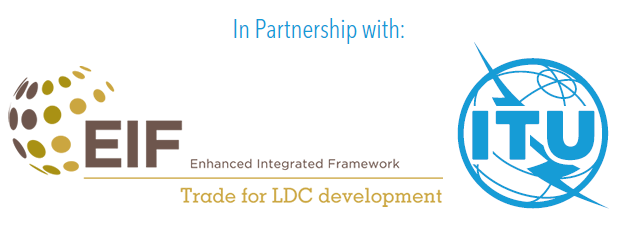4.3 Alignment with national strategies
National strategies include overarching ICT policies or master plans setting objectives and priorities that guide the process of making digital policies. According to ITU, one third of countries in the world did not develop yet a policy or master plan to guide the development of its ICT sector.63 A similar ratio is found with regards to countries that have developed a national development strategy, digital agenda or digital stimulus strategy including broadband.
Gender mainstreaming practices collected for this handbook are often aligned with objectives of national strategic documents. Table 13 provides examples of this alignment.
Table 13: Government mainstreaming practices aligned national strategy (by region)
| ITU region | Coordination and collaboration |
| Africa | N/A |
| Americas | Trinidad and Tobago’s ICT Access Centres aligned with the National ICT Plan 2018-2022 |
| Arab States |
The State of Palestine’s National Inter-Sectoral Gender Strategy institutionalizes gender mainstreaming in both policies and practices, not only at the government level but in other sectors, projects and activities Egypt’s tech initiative for women empowerment aligned with Egypt vision 2030: National Strategy for the Empowerment of Egyptian Women |
| Asia and the Pacific |
Australia’s Gender Equality, Disability and Social Inclusion Strategy (is a strategic document and a Values Pillar of the International Cyber & Critical Tech Engagement Strategy Republic of Korea’s 2022 Action Plan to Support Women Scientists and Engineers is aligned with the Digital New Deal Strategy. |
| Commonwealth of Independent States |
N/A |
| Europe |
Practices are aligned with national strategic documents. #eSkills4Girls is part of the Germany’s Federal Government implementation strategy “Shaping Digitalization” Gender representation in STEM areas is addressed by the Development Strategy of University of Montenegro Serbia’s Plan for Empowerment of Women in ICT 2019-2020 includes training on “programming, project management and digital entrepreneurship” |
Inclusion of gender references in strategic documents is important to ensure that gender objectives are taken into consideration when putting in place digital policies. Gender references can be identified with keywords such as “gender”; “gender equality”; “gender empowerment”; “women”; “girls”; “digital inclusion”; etc. References can have different levels of relevance in the document (e.g., if there is an entire chapter dedicated to women or girls) and they can be just a statement or they can propose a specific course of action.
National strategic documents do not always include these references to gender: only half of national overarching ICT policies or master plans include them. Analysis of 85 national ICT plans conducted by ITU64 finds that 46 of them include references to gender (women and girls). While further research is needed to investigate female inclusion in ICTs across national policies, it may be possible that some countries did not refer to women in such policies because their country’s women and girls are already included in ICTs and/or the digital sector. For example, less than half of countries (13 out of 28) from Europe made a reference to women and girls. Furthermore, countries which do not refer to gender include highly developed nations such as Austria, Liechtenstein, Portugal, Switzerland, Denmark, and Finland, among others.
Examples of women’s inclusion in national ICTs programmes include the following: ICT awareness, outreach and training programmes for women and girls (Trinidad and Tobago); Digital literacy skills programmes for women (Kenya, Slovakia, Nigeria, Malaysia); The establishment of a national level working group for women in science and technology that includes at least 30 per cent female representation (Maldives). Examples of gender references promoting equitable employment for women (using ICTs or through ICT development) include the following:
| Using digital transformation to increase women’s opportunities for promotion and work-life balance; working to increase female representation in corporate and academic leadership roles (Canada); | |
| Coordinating the use of funds to support entrepreneurial ventures and corporate capabilities, for the development of digital initiatives and training of competitive human resources with a gender perspective, and reducing technological and gender gap in national entrepreneurial ventures (Costa Rica); | |
| Improving safety and amenities for women industrial workers, increasing number of women working in light manufacturing, i.e., for apparel, addressing the gender gap in employment by creating more jobs for women in the tourism industry (Ethiopia); | |
| Training and continuing education for – in particular women-managed – small and mid-sized businesses active in online trade (Germany); | |
| Digital vocational training for women, particularly women who have/had long-term absence(s) from the labour market (Greece); | |
| Capacity building of women in mobile technologies allowing them to earn a living by creating businesses via the mobile apps channel e.g., delivery of lunch packages (Mauritius). |

